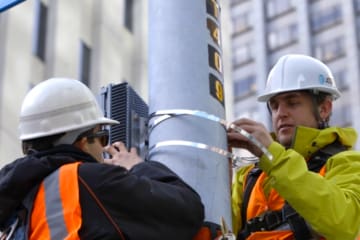If you can believe it, I’ve been an AT&T employee for nearly 45 years. When I first started, I was a cord board operator, meaning I was the one who would connect calls by plugging cords into sockets corresponding to a number. It was like something you might see in an old movie. Thankfully in those 45 years, not only have I upgraded my role, but AT&T has upgraded their services and offerings. That’s the thing about technology, you must be willing to embrace it if you want to succeed – and at AT&T, we’re doing just that.
That’s why I’m excited about what’s to come for us here in the South – and across the country, especially when it comes to getting our neighbors and communities connected. Right now, with access to game-changing amounts of federal funding, communities across the nation have an opportunity to execute on their plans to get as many people as possible connected to high-speed internet. We have an opportunity to make a huge difference in folks’ lives, and we are embracing it.
What’s more, we’re excited for the Infrastructure Investment and Jobs Act’s Broadband Equity, Access, and Deployment (BEAD) Program and how it will help states connect the unserved and underserved rural communities in our states. But, for mid-sized cities across our region like Norman, Springfield or Fayetteville, funding from the American Rescue Plan that was appropriated directly to cities and counties can be utilized now to expand each community’s digital capabilities and bring broadband to more neighborhoods.
My colleague Leslie Ward, President of AT&T Texas, recently wrote about how, after successfully winning an RFP issued by the city, AT&T is working with the City of Amarillo to connect more than 22,000 households and businesses to our state-of-the-art fiber network. This project is a great example of how the private sector and local governments can work together to bring connectivity and opportunities to communities that are the size of so many of ours.
Expanding access to high-speed internet, especially when combined with targeted adoption programs and the recent roll-out of the FCC’s Affordable Connectivity Program, helps put smaller-to-medium-sized cities on the same playing field as larger urban areas, giving residents equivalent access to personal and professional opportunities like telehealth, enhanced online learning, more jobs and the digital economy.
We have made – and continue to make – robust investments in our AT&T network, as I’ve seen firsthand spanning the past five decades, and have made huge progress in bringing the benefits of high-speed internet to our neighbors. But we have more work to do. We are eager to expand our network by working with local leaders who know their community’s needs best and how to maximize this unprecedented federal funding through public-private partnerships.
We have the opportunity of a lifetime to connect an unprecedented number of communities – big and small – to technology that will change lives. Now is the time to embrace this opportunity and work together, planning and executing, to make sure our businesses and residents are ready to compete in tomorrow’s economy. I can’t predict what will happen in another 45 years, but we can work today to make it a better, more connected future.





